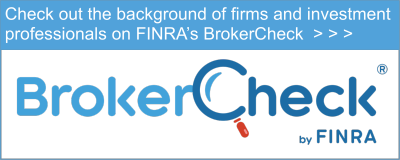February 2017 Newsletter
Why You Shouldn’t Care if the Rally Keeps Rolling or Collapses
The financial markets are an emotional place, driven largely by optimism and pessimism. We’ve seen a bit of both since the election of Donald Trump last November, but mostly, we’ve seen optimism based on the logical idea that Trump’s business experience should enable him to deliver on his vow to grow the U.S. economy by 4% annually. As a result, the stock market has hit new peak highs several times, culminating with the Dow Jones Industrial Average topping 20,000 for the first time in history on January 25. In the midst of all this, however, we’ve seen bouts of volatility linked to everything from weak earnings reports to protests over some of the Trump administration’s non-economic policies and actions.
I believe we could see either this “logical,” optimistic influence on the markets continue, or an “emotional” backlash from his critics could trigger a sell-off—and possibly even the start of the next major market plunge. The good news for investors at or near retirement is that you really shouldn’t have to care much about whether logic or emotion take full control of the markets in the months ahead. I believe there is no logical reason for you to be chasing a potential additional 10 to 15 percent market gain in the first place—certainly not if that means risking the emotional devastation of possibly losing 30 to 70 percent of your portfolio by getting caught in the next major downdraft. If that makes sense to you, then by now, you should have shifted (or should be in the process of shifting) your financial focus from growth to protection and income.
With so much hype and uncertainty surrounding the markets right now, I feel this is a good time to reinforce some of the most important (and misunderstood) points about reducing risk and investing for income after age 50. I encourage you to share these points with friends or family members you think might benefit from this information—and encourage them to learn more!
Investing for Income 101
First, shifting your focus to protection and income doesn’t mean completely sacrificing growth: it just means no longer making it your top priority, as it likely was in your 30s and 40s. At that age, most people have what I call a “401(k) mindset,” or a lump-sum way of thinking. That’s where you look at your statement, and if your lump-sum value went up, you’ll be in a good mood, but if it went down, you’ll be in a bad mood. But after age 50, you no longer have to think solely in terms of your lump-sum—nor should you. I believe you’re better off thinking first in terms of income.
Unfortunately, the reason many people fail to make this shift is that they are uninformed or have been misinformed about the world of fixed-income strategies. They may view them as only slightly less risky, but significantly less rewarding, so their attitude is: “It’s not worth it.” That’s especially true in a low-interest-rate environment like the one we’re in now because most people believe that when interest rates are low, they must go up, and that when that happens, the value of bonds and other fixed-income securities goes down. While that’s basically true, there are two important points these investors should understand. First, with a fixed-income investment like an individual bond, the loss of value is typically only a paper loss because your principal investment is insured by the issuer if you hold the bond to maturity. And second, your income shouldn’t change; it is set to be paid through interest or dividends at a fixed amount for the life of the bond, regardless of whether rates overall go up or down. Typically, when I tell people that it’s possible to earn 5% interest or dividends annually without the risk of common stock or stock mutual funds, they’re shocked. Their own advisor has never told them this, often because he has a stock market-based business model and deals in fixed-income strategies as an afterthought, meaning he’s more likely to put his clients in a “murky pool” of mutual funds lacking transparency or a managed portfolio of bond funds.
Real Estate on Steroids
A good analogy for understanding fixed income is to think about investing in speculative real estate versus rental property. With the first, the only way to make money is if the property value goes up and you sell it at the right time—as with a non-dividend stock. With rental property, you’re less concerned about the fluctuating value because you have a consistent cash flow from your tenants. The only risk is if someone doesn’t renew their lease and the property sits unrented. But, imagine if you could find a tenant who agrees to lease the property for 10 years and then buy it outright at a fixed price after the ten years. That’s like a rental property on steroids—and that’s basically what an individual bond does! A folksier analogy I like to use is: think of an individual bond like having a chicken. You could eat it, but why would you if it’s reliably providing you with eggs? The chicken is your secure principal; the eggs are your income.
One reason people may lack this kind of information about fixed-income strategies is that the financial media and some advisors like to focus only on the more “exciting” and, in many ways, simpler world of stocks and mutual funds. They may even try to scare investors with phrases like “the bursting of the bond bubble.” I would argue that anyone using that term today doesn’t really understand fixed income. Yes, long-term interest rates have risen recently, impacting bond values, but, like many analysts, I believe low rates overall are now “the new norm.” Additionally, even when rates do rise, the bond market never fluctuates as dramatically as the stock market—which is why actively managed fixed-income strategies can potentially strengthen a portfolio against loss, even in a rising interest rate (or “bursting bubble”) environment.
So, think about that, and then think once more about how a 30 to 70 percent real loss in the stock market might impact your retirement goals if you should get caught in the next major plunge. Then, ask yourself again (and ask your friends) if making that shift from a growth mindset to a protection and income mindset sounds like it might be “worth it!”
Copyright © 2016. All Rights Reserved, Pacific Financial Planners, LLC.
Pacific Financial Planners, LLC. is an Independent Registered Investment Advisor. Securities offered through Western International Securities, Inc., headquartered in Pasadena CA. Pacific Financial Planners, LLC. and Western International Securities, Inc. are separate and unaffiliated. The material contained within are the opinions of Jerry Slusiewicz only and are neither an offer or recommendation to buy or sell any securities or strategies mentioned. You should always check with your professional financial advisor and/or tax advisor before taking any action on any of the securities or strategies contained on this site.
Your Money Talks
KLAA AM 830
Saturdays 1:00 p.m.
For 15 years, Jerry has provided radio listeners the opportunity to ask questions on the air about their investment needs. Some of the areas he covers include life matters such as risk management, retirement & estate planning, college educational funding, life insurance, annuities, long-term care, and ways to increase your nest egg.
Call Jerry today with any questions or comments regarding this article.
(800)449-9501
OR
Visit our website for FREE Financial Planning Resources.
 Pacific Financial Planners, LLC.
Pacific Financial Planners, LLC. Pacific Financial Planners, LLC.
Pacific Financial Planners, LLC.